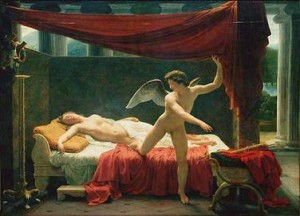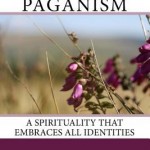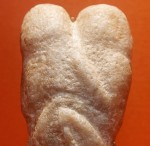
Pagan rituals are performed with the whole body as well as the mind and the heart. They have an erotic quality – not overtly, but sublimated and transmuted. Ritual is sensual, and involves all the senses. This erotic aspect of worship is frequently expressed by medieval Christian mystics, Sufis like the poet Rumi, as well as contemporary Pagans.
The mood-swing of Western culture against the body, women and sensuality is said by historians to have begun around 500 BCE and reached its height in about 500 CE. At its worst, it was profoundly anti-women. It had a lasting influence on the Christianity of later centuries.
Bound up with this fear of women, sexuality, and the body was the fear of the dark, which is connected with the feminine, nature, and wilderness and has been denigrated for most of Christian history. In patriarchal culture, the assertive and sexually active female is regarded as dark, dangerous and malevolent, and characterised as a witch. The passive female is elevated as the model for how women should be: quiet, virginal, and modest. In order for patriarchy to function, female sexuality must be suppressed and controlled, and men must be taught to fear it and abuse it; and the wilderness must be conquered and tamed.
Fortunately for us, the mystics frequently rebelled against this anti-women worldview. Their writings were deeply sensual and erotic, and extolled the dazzling darkness of God, the ultimately unknowable and mysterious aspect of the Godhead.
Judaism, on the other hand, never entirely abandoned its respect for the body and for women, and making love remained an act of worship. It was and is obligatory in Judaism to make love on the Sabbath Eve, because making love reunites the exiled Shekhinah with the Godhead. According to many Jewish theologians, the Shekhinah, who is the immanent feminine aspect of the Divine, is exiled in the material world, and seeks to be reunited with the transcendent male Godhead. We can help her by making love and performing acts of kindness, which are known as Tikkun Olam, repairing the world.
Spirituality and sexuality are intertwined. The most profound sexual experiences involve an abandonment of the centrality of the ego and opening up to the beloved other; this can become an opening up to the Divine Beloved. This is reflected in the erotic and spiritual poetry of the Sufis. The Sufis loved the night, which was seen as the time when the soul was most open to the Divine Beloved.
Similarly, the deeply spiritual is also erotic, and opening up and self-abandonment to the Divine can resemble a relationship with a human partner. The ancient Greek story of Eros and Psyche represents the Divine visiting the soul. In India, the story of Krishnapleasuring a thousand cow-girls simultaneously also symbolises the erotic relationship with the Divine. Medieval mystical poetry is full of erotic yearning for the Divine. One meditation on the Song of Songs exclaims “Oh that he would kiss me with the kisses of his mouth”. In the medieval period, among both Jewish and Christian thinkers, the Song of Songs was seen as an allegory of the soul’s relationship with God.
So, how can ritual be erotic without being overtly sexual? How do we entice Eros to visit Psyche?
The erotic can be sensual, involving all five senses. There can be visual elements to ritual: magical tools, the altar, flowers, candlelight, jewellery, pictures.
Ritual can include scent – the smell of flowers, incense, good moist earth, baking bread, wine, fruit. Smell is the most subtle and evocative of all the senses, and smells can transport you instantly to a memory of the past or an intimation of future bliss.
Ritual can include taste – the taste of food, mindfully and appreciatively savoured, shared amongst friends. Many Pagan rituals include the use of food in a ritual context.
Jewish worship in the home includes food, as in the well-known ritual of the Seder (Passover meal) with its various symbolic foods.
Ritual can include touch and movement – hugging, dancing, joining hands, gestures, warming oneself at a fire, anointing with oil and water, ceremonial kissing, the feel of rich earth, planting bulbs, experiencing textures.
Ritual includes sound, but there is not as much singing in Paganism as there could be (presumably a reaction to the singing of hymns in Christianity. The lyrics of Pagan chants are sometimes a bit trite. In Hinduism however, the classical raga form goes through stages, firstly of yearning for the Divine Beloved, making contact, and achieving union. The erotic aspect of this encounter is clearly celebrated in the music.
The erotic aspects of spirituality are present in Paganism (especially Wicca) but not much talked about, because they are so easily misunderstood. The erotic can be sensual, passionate, tender, mysterious, alluring, mystical; it does not have to be explicit or acted upon.
Our rituals are performed with the whole body, not just with mind and heart. This is how we integrate our spirituality with everyday life. As Mary Oliver so memorably put it, “Let the soft animal of your body love what it loves.”
Let us welcome Eros into the bridal chamber of the psyche, for only then can we make the shift from the domination of the ego (the rule of law) to the balance of all aspects of the psyche (the religion of love). Let us descend into our own depths to encounter the darkness and silence, and be dazzled by the unknowable mystery of the Divine.
















